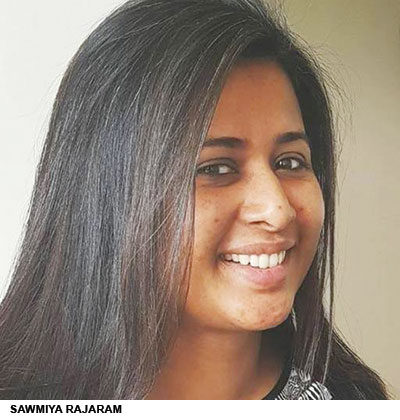 In the draft National Education Policy 2019 report submitted by the Kasturirangan Committee to the Union HRD ministry on May 30, the power of the Delhi-based National Council of Educational Research & Training (NCERT) to “shrink the curriculum content in each subject to its core,” has been substantially expanded. Ditto SCERTs (State Councils of Educational Research and Training). But recent NCERT curriculum changes suggested by the council to lighten students’ syllabus load arouse apprehension that the subjects it proposes to drop are the wrong ones.
In the draft National Education Policy 2019 report submitted by the Kasturirangan Committee to the Union HRD ministry on May 30, the power of the Delhi-based National Council of Educational Research & Training (NCERT) to “shrink the curriculum content in each subject to its core,” has been substantially expanded. Ditto SCERTs (State Councils of Educational Research and Training). But recent NCERT curriculum changes suggested by the council to lighten students’ syllabus load arouse apprehension that the subjects it proposes to drop are the wrong ones.
For instance, the council has removed three chapters from the class IX social science textbook titled India and the Contemporary World-I. The three chapters are ‘Clothing: A Social History’, ‘History and Sport: The Story of Cricket’ and ‘Peasants and Farmers’. These omissions are ill-advised as the chapters on the history of sports and history of clothing shed light on critical time periods of struggle and social reforms.
The latter gives an account of the apparel norms and ideas of beauty that existed in England, Europe and the United States and the reforms introduced to liberate women from strait-laced norms. This chapter details how apparel and dress defined the identity of women and traces the history of dress reform. Further it narrates clothing and dress transformations in India while connecting them to stringent caste-based dress codes — e.g, prohibiting lower caste women from covering the upper part of their torsos, using umbrellas or wearing shoes or gold ornaments — most strictly imposed upon Nadar caste women by the Malabar region’s (contemporary Kerala’s) dominant castes, especially the Nair community. It details the struggle of Nadar women to cover their bodies and the stance of the British Raj government which issued a proclamation to this effect but limited their right to cover their upper body “in any manner whatever, but not like women of high caste”.
 Likewise, the chapter on history of cricket delineates colonial history and how religious communalism and caste politics permeated this popular game. It traces the development of cricket, highlighting the exclusion of girls and women from all sports, and the link between race, religion and cricket. And chapter 6 focuses on peasants and farmers by discussing the agricultural revolution and its impact on India.
Likewise, the chapter on history of cricket delineates colonial history and how religious communalism and caste politics permeated this popular game. It traces the development of cricket, highlighting the exclusion of girls and women from all sports, and the link between race, religion and cricket. And chapter 6 focuses on peasants and farmers by discussing the agricultural revolution and its impact on India.
It is submitted in the draft National Education Policy 2019 that deleting these histories from senior school textbooks will not only erase the history of these important liberation movements, it will also deprive students of knowledge about how new norms emerged in marginalised communities and translated into new rights and freedoms for women. For any discipline to evolve, history provides lessons and explanations of how social rights and dignity are won. In the past, national policies on curriculum were drafted bearing these objectives in mind.
For instance, National Education Policy 1986 prescribed a national curriculum based on the realisation of constitutional rights and objectives and a detailed PoA (programme of action) which stressed the relevance, flexibility and quality founded on the values of justice and equality. The National Curriculum Framework, 2005, proposed a curriculum which would emphasise constitutional values such as secularism, equality and pluralism. The drafting committee extensively deliberated on ways and means to reduce the syllabus/curriculum burden on children and proposed five guiding principles for curriculum development: (i) connecting knowledge to life outside school; (ii) ensuring that learning shifts away from rote methods; (iii) enriching the curriculum to go beyond textbooks; (iv) making examinations flexible and integrating them with classroom life; and (v) nurturing an overriding identity within the democratic framework.
In particular, NCF 2005 proposed a paradigm shift in the study of social sciences from the perspective of marginalised groups, highlighting the importance of gender justice and sensitivity towards historically marginalised and oppressed scheduled castes and tribes. Even the latest annual report of NCERT (2017-18) admits that a study conducted by the department of curriculum studies of social science textbooks for classes IX-X children, indicates that the women’s perspective is missing to the point of neglect. The study admits that women’s contribution to historical events, preservation of culture, historical heritage, handicrafts, sculpture and architecture, in the field of ancient and medieval literature, freedom struggle, social reformation, etc, has been substantially ignored.
In this context, the recent curriculum changes erasing narratives of marginalised subaltern communities and gender justice movements from social science textbooks are regressive. They fly in the face of the NCF 2005 directive that social sciences should be taught from the perspective of marginalised groups and gender justice. Therefore, it’s quite obvious that due care and diligence has not been exercised by NCERT in choosing the chapters to be excised from senior secondary social science textbooks.
(Sawmiya Rajaram is assistant professor at the Jindal Global Law School, Sonipat and Sulila Anar is a research analyst at the National Institute of Educational Planning and Administration, Delhi)


























